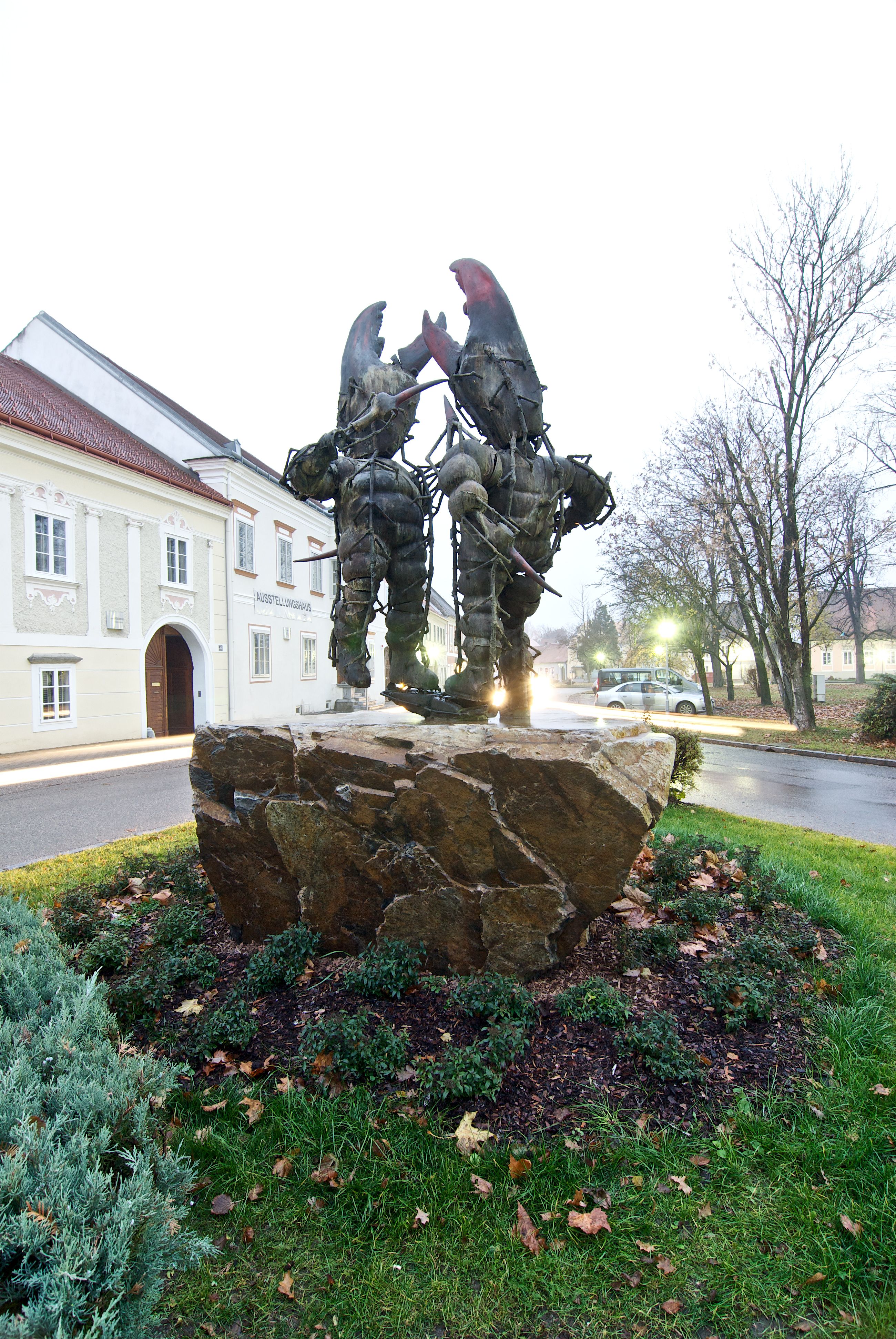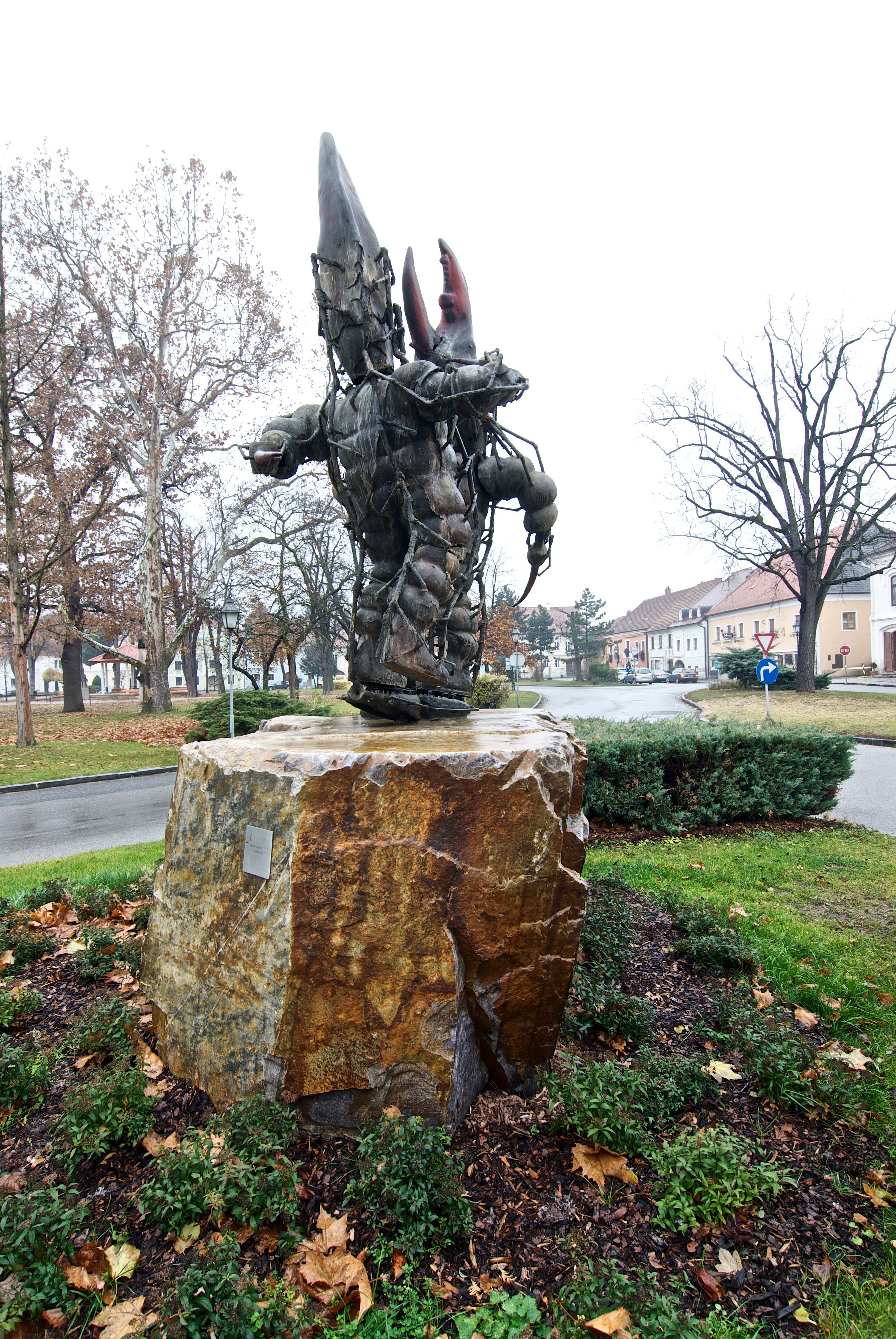Daniel Spoerri
:
Die Haderer
Back
Information
Daniel Spoerri's new bronze sculpture Die Haderer stands surrounded by richly ornamented Renaissance, Gothic and Baroque houses, not far from his exhibition space and his restaurant on the main square of Hadersdorf am Kamp. Two 600 kilogram hermaphrodites whose trunks and limbs are reminiscent of people in astronaut suits appear to be fighting on a powerful plinth of prehistoric rock. Instead of heads and hands, the bodies have lobster claws.
Daniel Spoerri's new bronze sculpture Die Haderer stands surrounded by richly ornamented Renaissance, Gothic and Baroque houses, not far from his exhibition space and restaurant on the main square of Hadersdorf am Kamp. Two 600 kilogram hermaphrodites whose trunks and limbs are reminiscent of people in astronaut's spacesuits appear to be fighting on a powerful plinth of prehistoric rock. Instead of heads and hands, the bodies have lobster claws. The figures, Daniel Spoerri says, are the product of his "artificial, transformative engagement with shapes from the world of fauna and flora". The title of the sculpture clearly references the name of the community. Deeper research shows that the Hadersdorf coat-of-arms is the product of a misunderstanding — perhaps it could be called a historical coincidence: In the deeds from 1136 the community is still named after the lord of Nöstach-Schwarzenberg, known as 'the Hadericher'. However, ignorant of the true meaning of the name, in 1514 Emporer Maximilian I granted the community its coat-of-arms, which shows two brawling Landsknechte (mercenaries). Now the artist has dedicated a sculpture to the people of Hadersdorf with his own two pugnacious figures that draws a line back to the history of the location. However this may also be a coincidence. A special formal feature of the sculpture is that the air channels which permit any superflous metal to escape during casting are integrated into the composition. This excess metal was not removed after the piece was cast, and forms irregular bars stretching around the figures that show how the sculpture was made. In stylistic terms, Die Haderer bears similarities to Spoerri's Prillwitzer Idole work group, large bronze figures that he has been making since 2005. These figures also allude to a kind of historical misunderstanding. The original Prillwitzer Idole, which Spoerri references with the title, stem from the 18th century. It is an ensemble of bronze sculptures and bronze reliefs of what were thought to be 11th century Slavic idols. While being artistically innovative, they were also forgeries that fooled many people.
Daniel Spoerri has a major affinity for the coincidences of everyday life, which he has been documenting in his assemblages and collages of materials since the 1960s, inter alia with his snare-pictures. He has also been increasingly producing large bronze figures since the 1990s. As the founder of Eat Art and co-founder of Nouveau Réalisme, with his complex oeuvre he has his eye on no less than the whole world with its developments and the encumbent decay. Traditional patterns of perception are consistently and unremittingly challenged, while everyday life is integrated into art and art into everyday life.
(Cornelia Offergeld)
Images (4)




